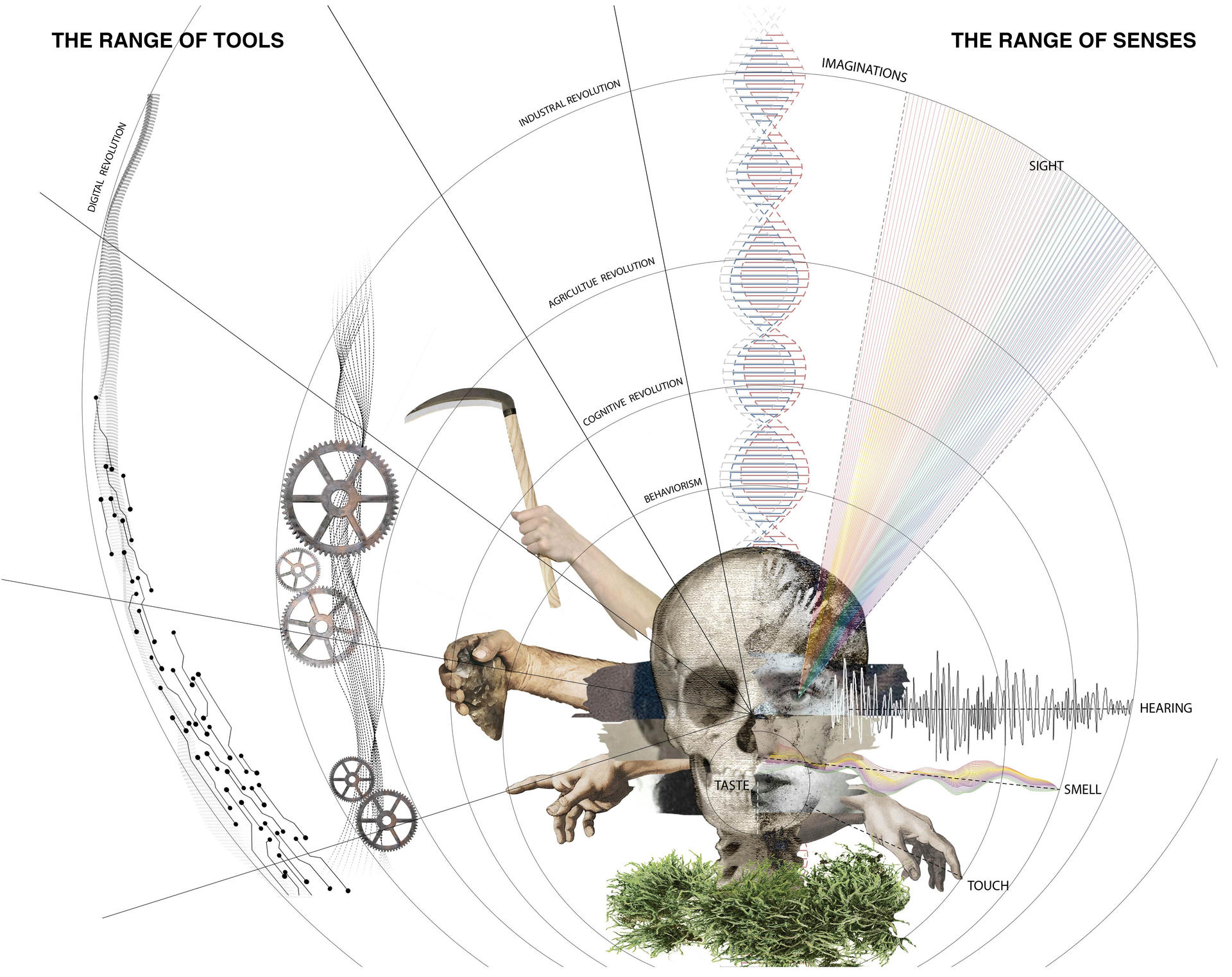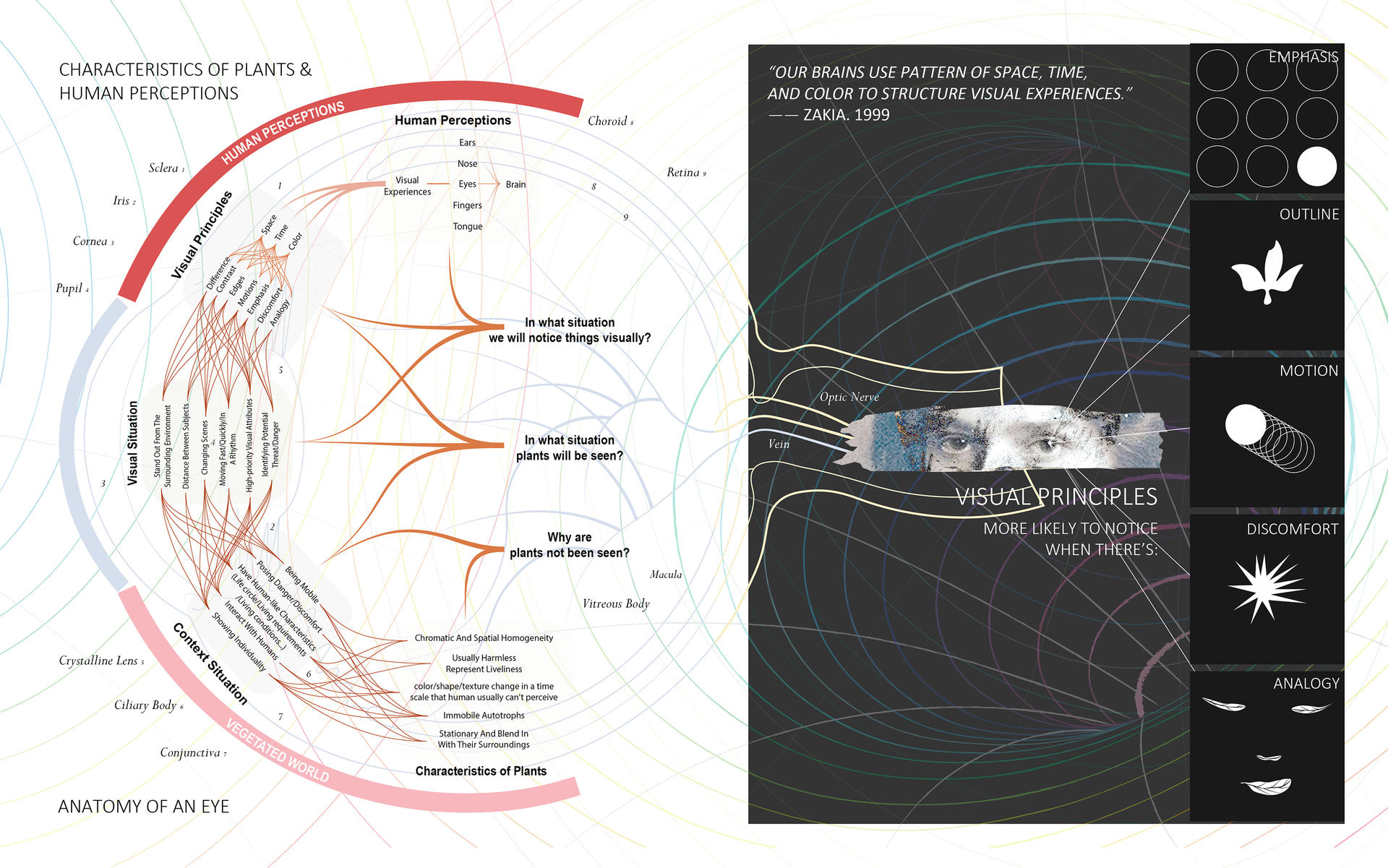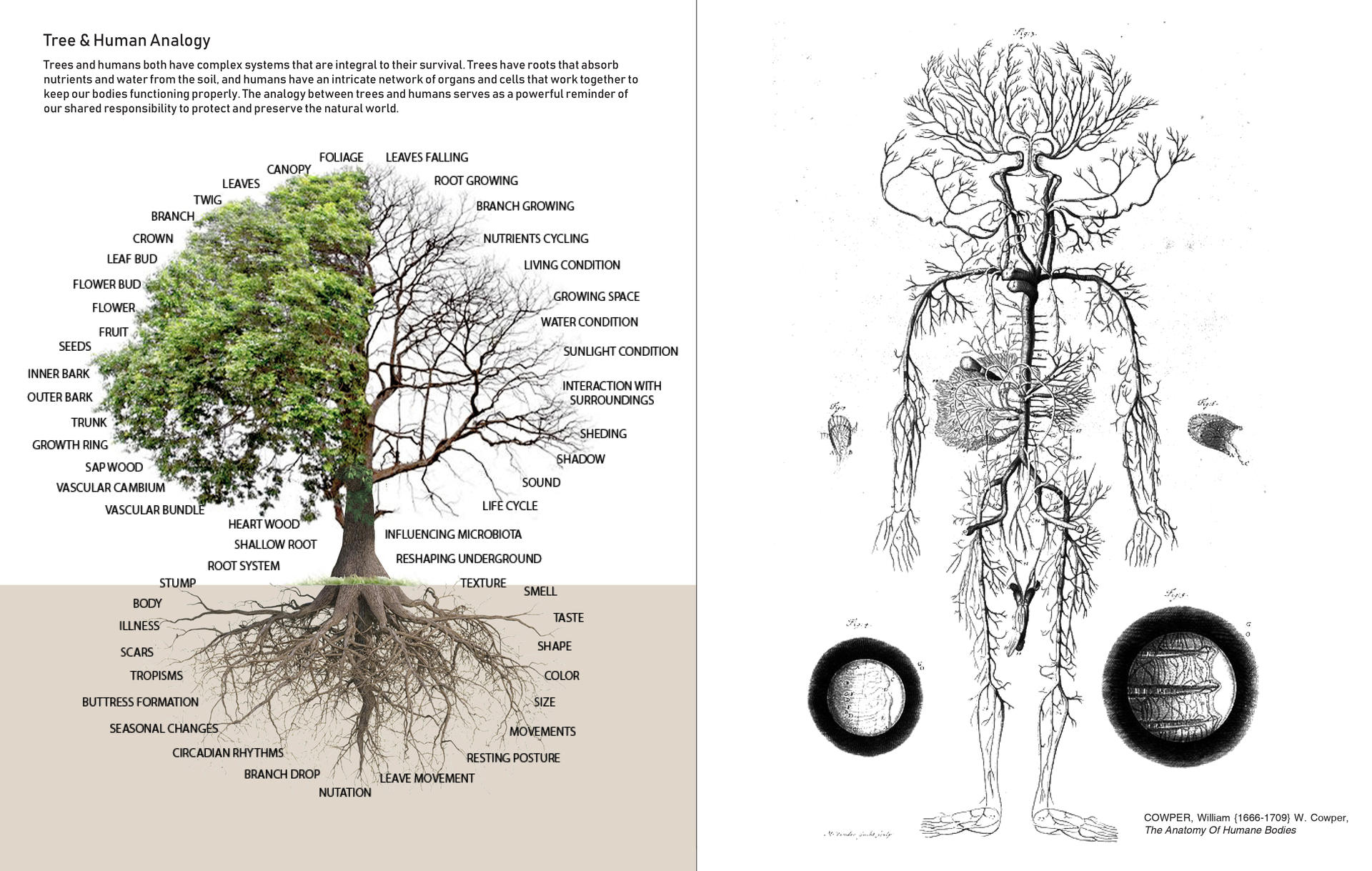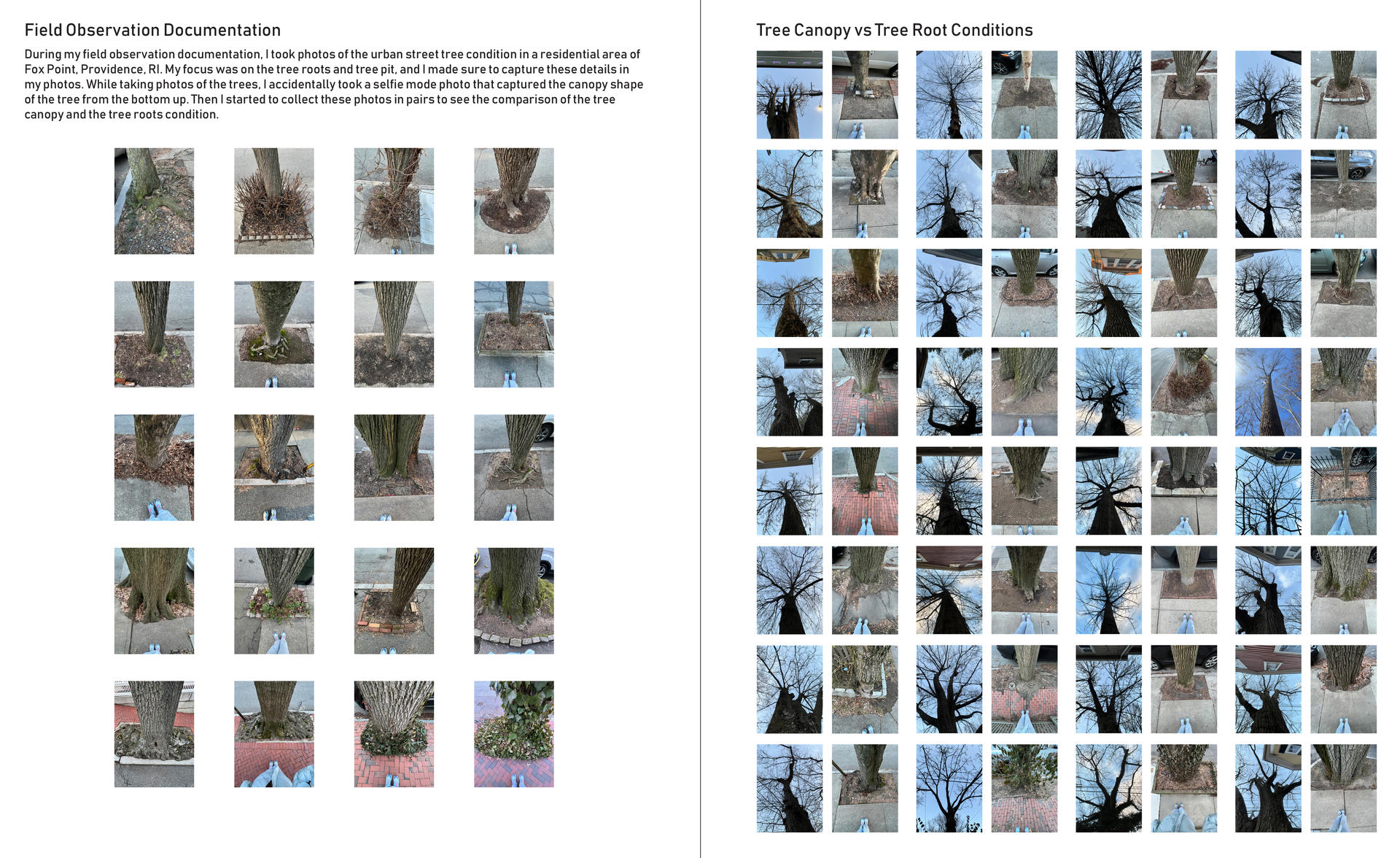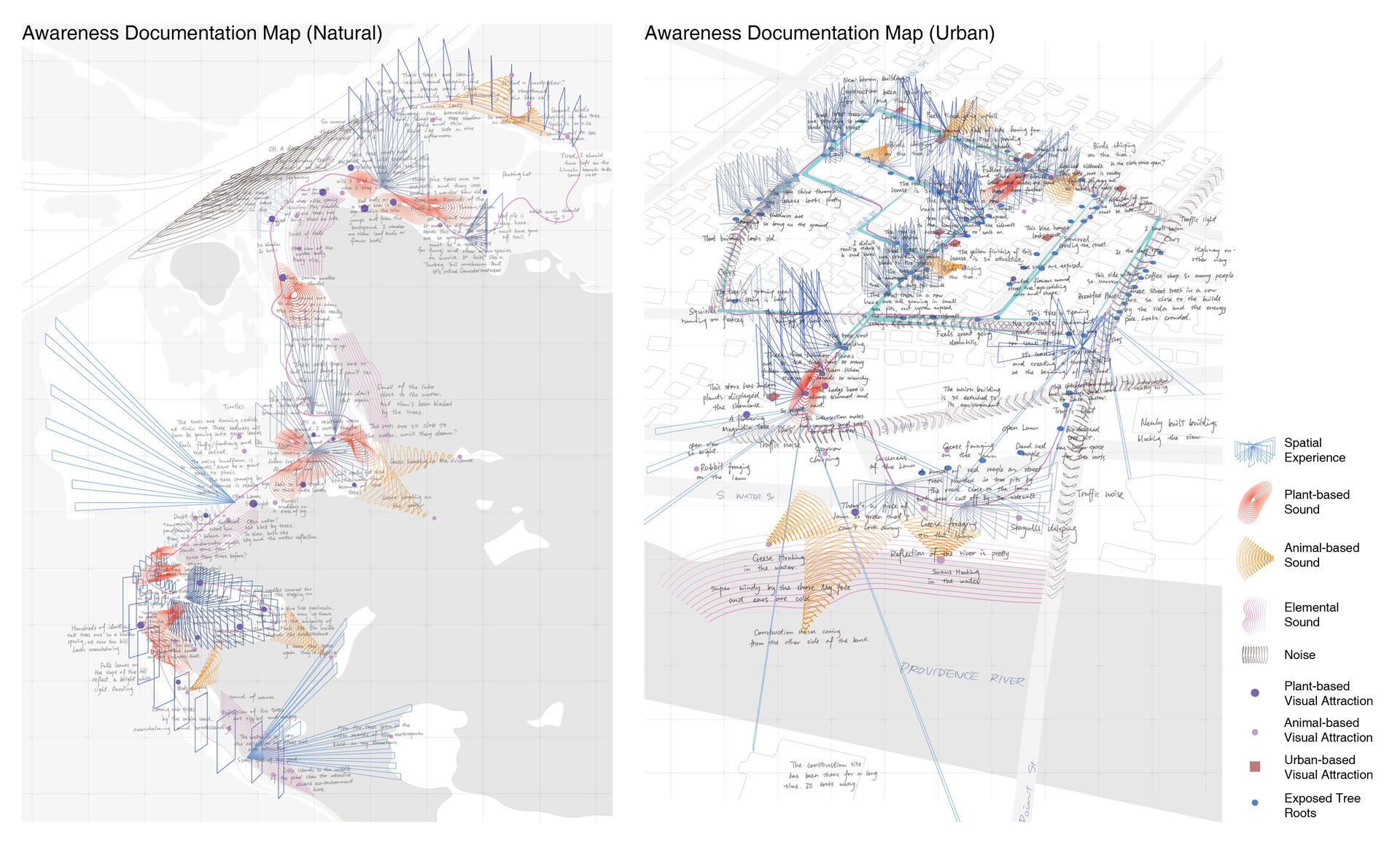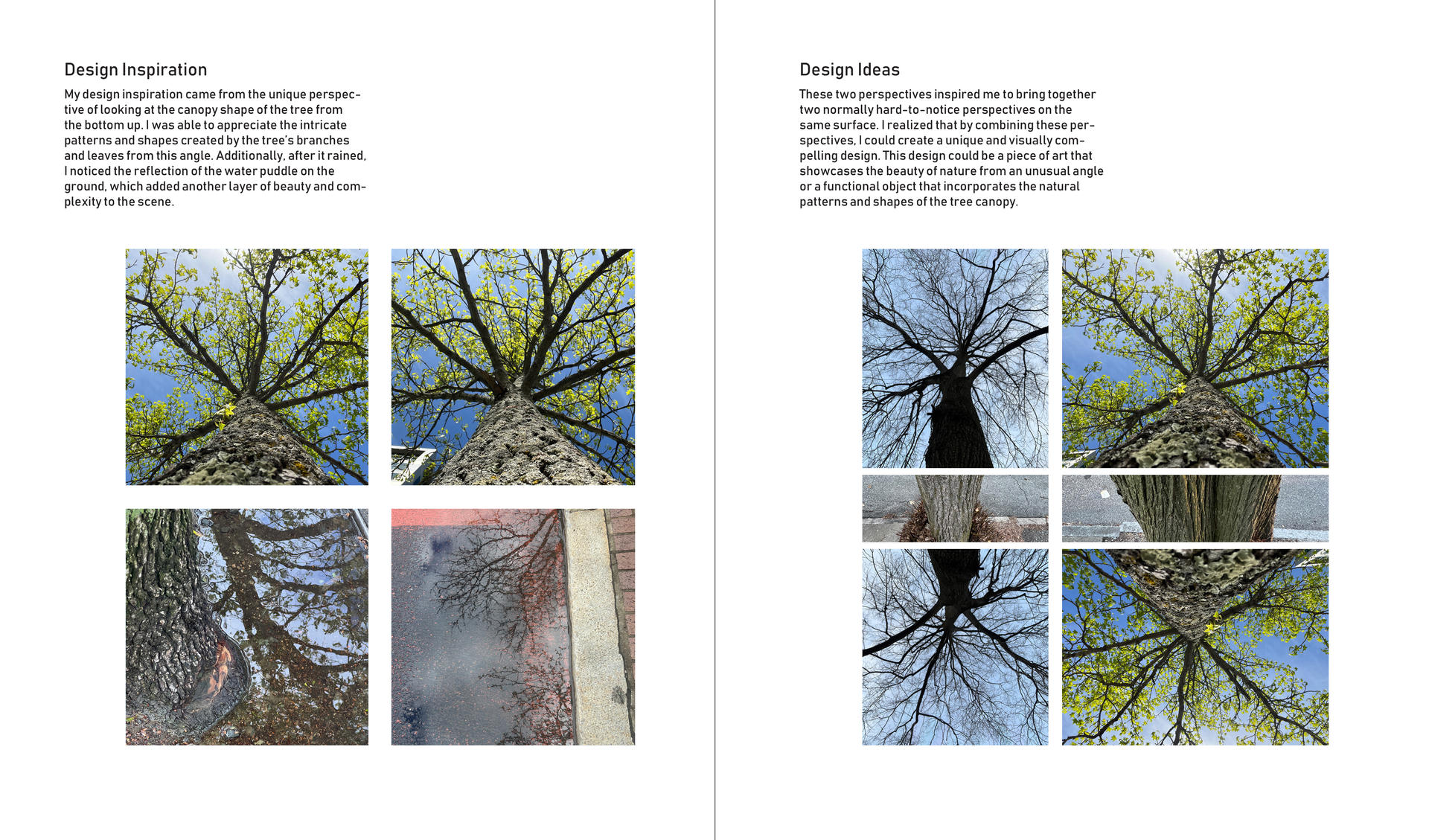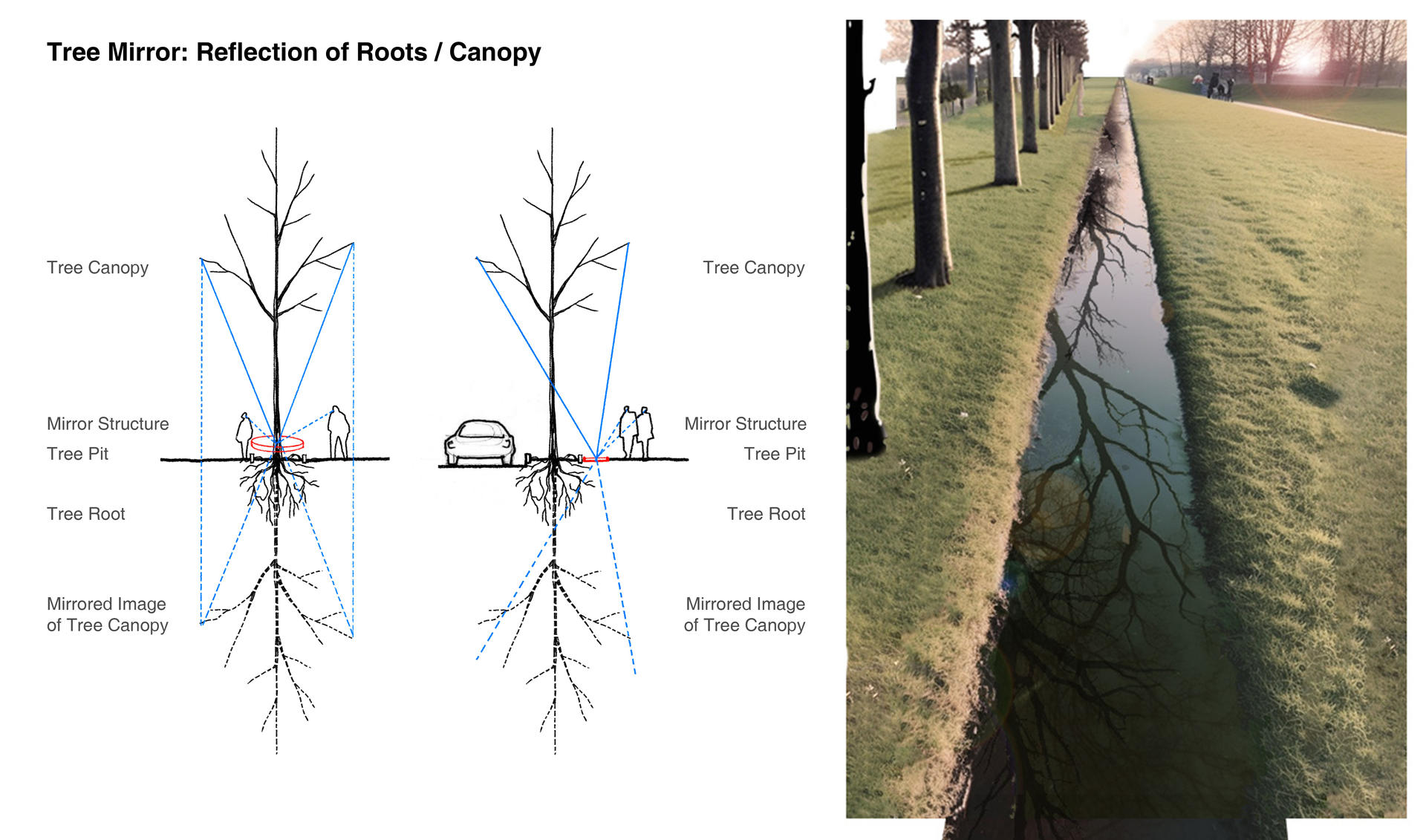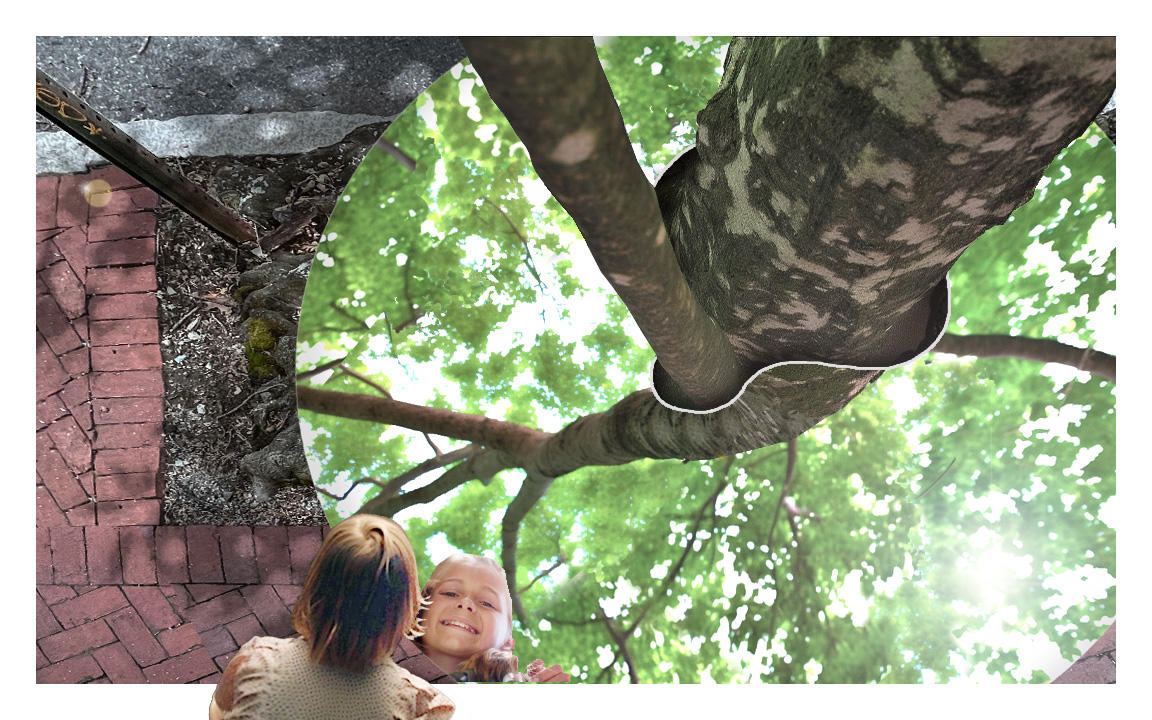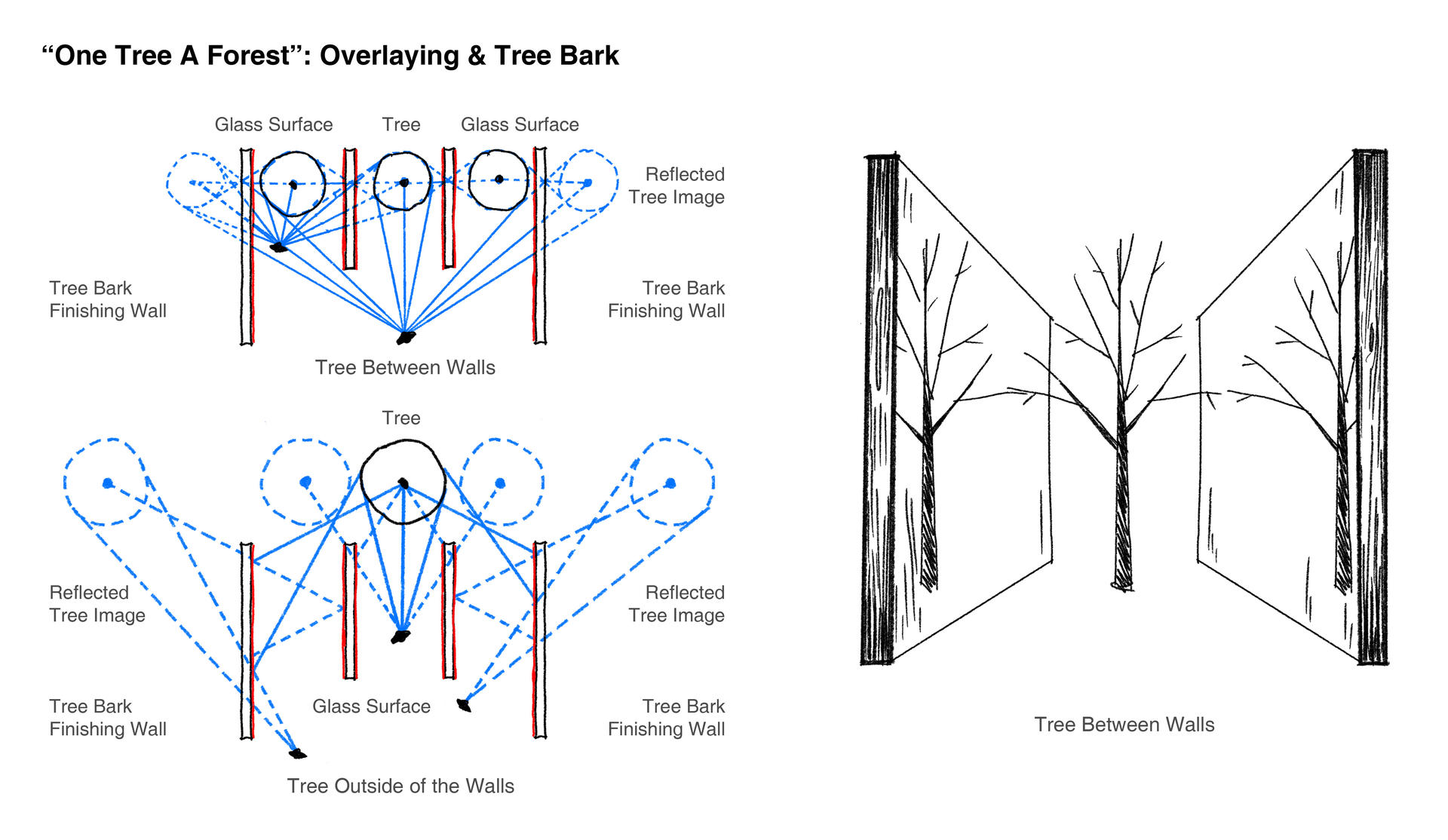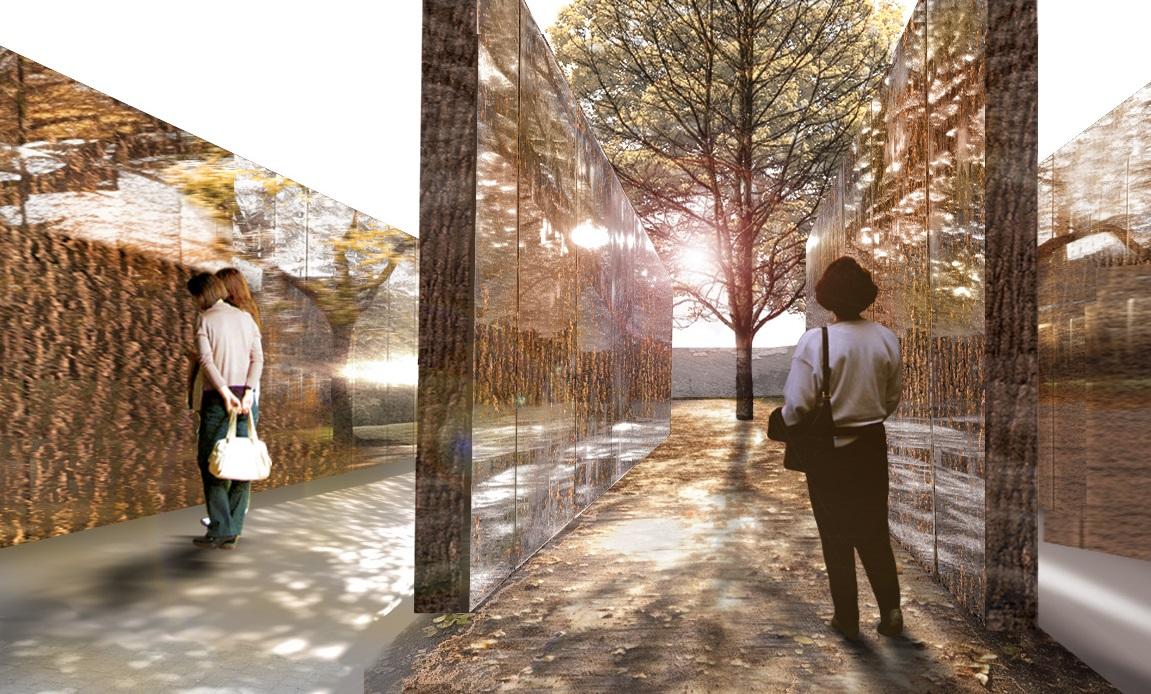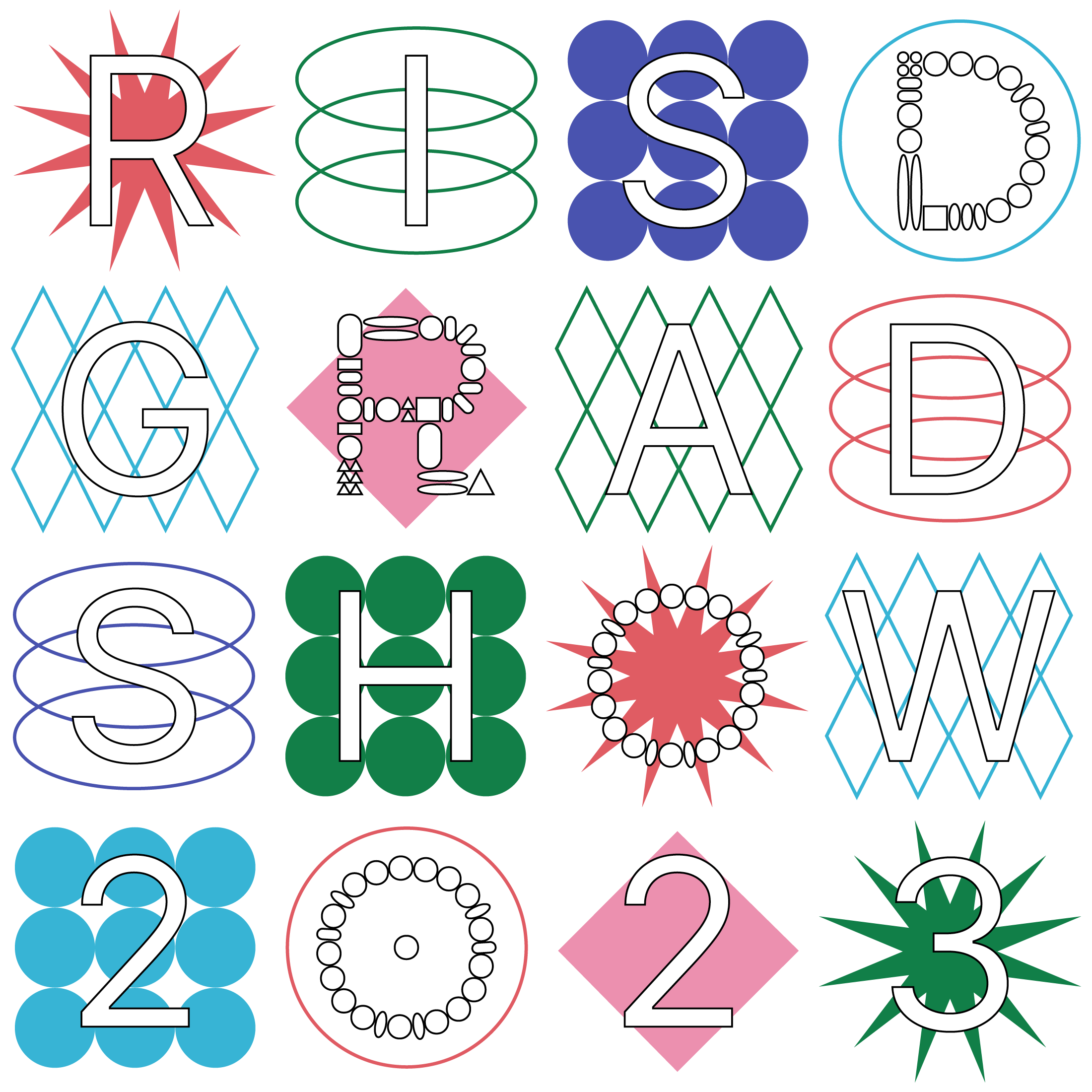USING THE BODY AS A MEASURING TOOL
During phase two of my investigation, I shifted my perspective from plants to humans and started to use my body as a measuring tool to investigate the relationships between awareness and the landscape that we are in. By using various methods, such as photography, sound recording, sketching, and tactile exploration, I was able to capture the changes in awareness that occurred as I moved through different environments. By immersing myself in the environment and documenting changes in awareness, I gained a more nuanced understanding of how it impacts our awareness and sense of place.
I noticed that my level of awareness was heightened when I was in a densely wooded area, where the sounds and smells of the forest surrounded me. On the other hand, my senses were dulled when I was surrounded by a bustling cityscape, with the noise and visual clutter overwhelming my senses.
In addition to documenting changes in awareness, I experimented with different methods of representation. I took photographs to capture the visual aspects of the environment, while also creating sketches and models to convey a more tactile or spatial understanding. This approach allowed me to explore the shifting scales of awareness, from the tiny details of plant textures and colors to the larger scale of entire landscapes. By moving between these different scales, I gained a more comprehensive understanding of the relationships between humans and the natural world.
The insights gained during phase two were crucial in developing my design for the next phase. By zooming out and taking a more holistic approach, I was able to develop a nuanced understanding of the complex relationships between humans and the environment.
